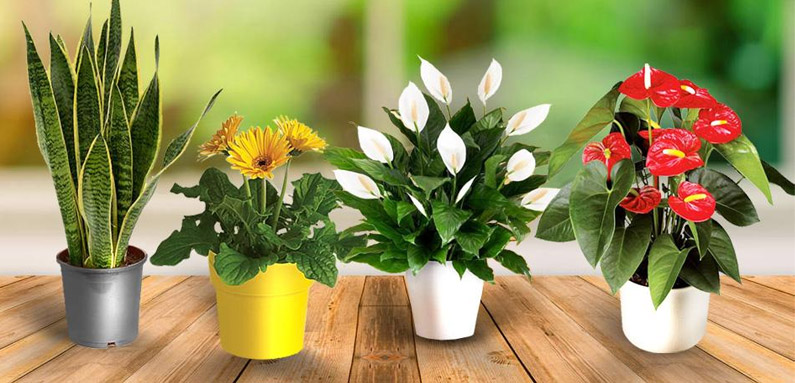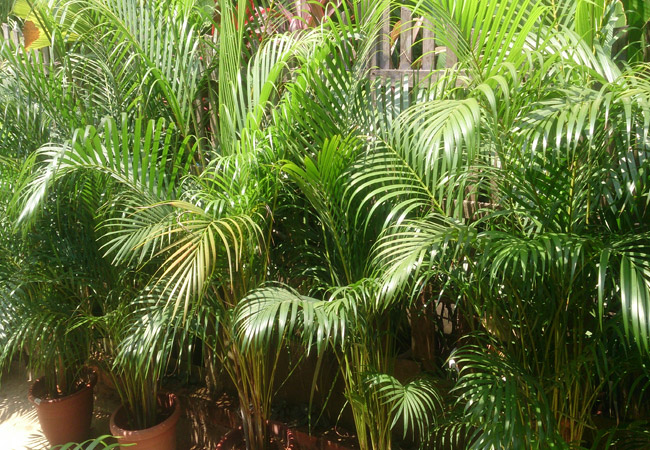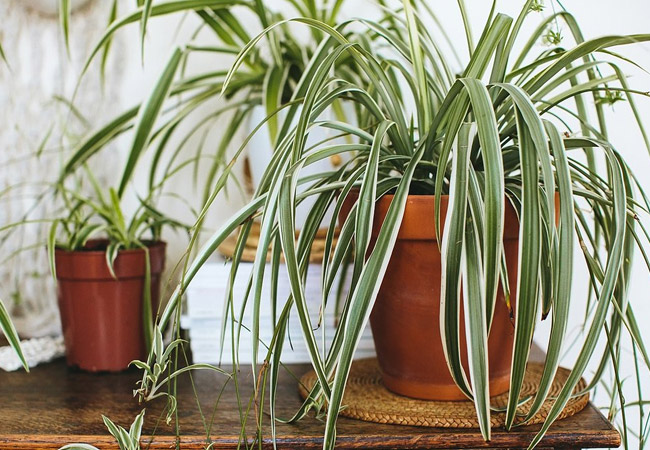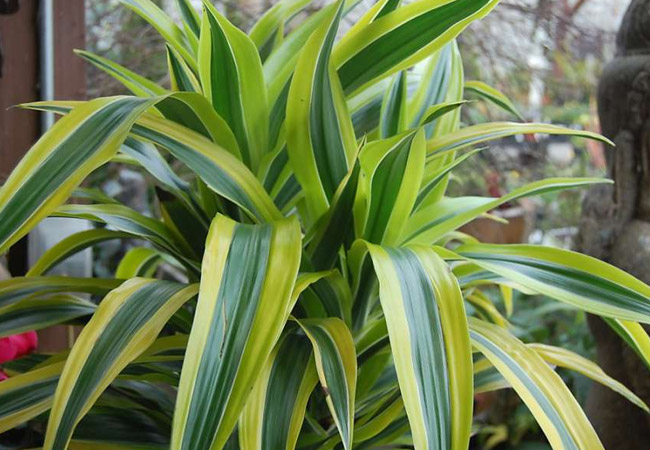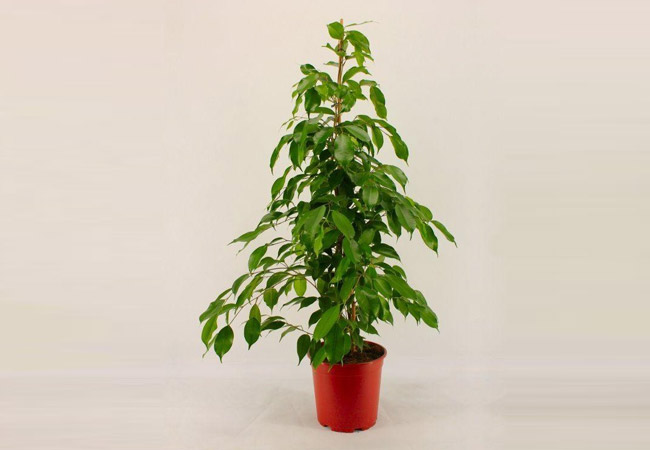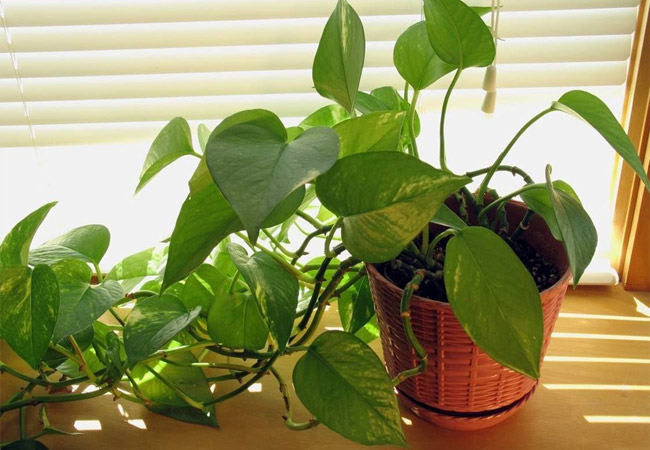Definitely I am not going to begin my magnum opus here, but yes, I want to make this piece of article on air purifying plants rich enough to help you out. It’s all about how you can deal with the growing pollution in the major cities and its side effects, in natural way. This is not going to be an expansive one but yes, it will gushingly relate to the well being of your physical and mental health.
Plants and the greenery around is definitely something that can keep you at bay from the doctor’s doorstep, but only if you can value them and be friendly with them. Before letting you know which plant can purify the air around your home, you must know which type of pollutants may be there at your home. And here we go….
- Mildly dangerous ammonia emanates from the Toilet.
- The extremely hazardous Carbon monoxide gets into your home’s air from the cooking stove that you use every day.
- The detergent and garbage are responsible for the production of benzene and formaldehyde respectively that definitely won’t let you be at peace.
And, all of these can cause a number of problems to your physical health including Eye Irritation, Itching, Cough, Rashes, allergies and many such.
But thankfully, nature has been benevolent to the mankind with a number of its natural remedies to even the extreme havocs created by humans. There are some plants that will help you breathe fresh air at least in your homes and offices. Here are a few varieties of those plants…
1. Aloe Vera (Aloe Barbadensis)
There are a number of benefits of having an Aloe Vera at your home! Apart from being a healthful plant for the skin and hair, this plant also promotes good health and overall well-being in human beings by removing the dangerous air pollutants from the indoor air for safer breathing. Looking at the rising level of pollution in various major cities around the world, we must not wait to bring this plant in our homes!
Toxins removed: Benzene and formaldehyde
How to Take Care:
- Aloe vera can survive in bright and indirect sunlight or artificial light.
- Preferable temperature: 13 and 27°C
- Give plentiful water to aloe vera plant at one time. Water the plant when the soil is absolutely dry.
- Avoid frequent watering this plant during winters.
2. Peace Lily (Spathiphyllum)
Peace Lilies make the most popular and demanded plants for home decoration among the people. The rich foliage and the bright colors of the leaves spruce up the home decor while demanding less care from you. It is loaded with the strong VOC absorbing capability that makes this plant extremely useful to bring home. Being an air purifying plant finding a place in the NASA Clean Air Study, bringing it home makes the indoor air clean and devoid of harmful pollutants.
Toxins removed: Benzene, Carbon Monoxide, Formaldehyde, Toluene, Ammonia, Trichloroethylene, & Xylene
How to Take Care:
- Peace lilies do not like direct sunlight. They prefer light partial shade and can thrive well in artificial lights.
- Avoid pouring chlorine water in the peace lily plant as it is highly sensitive to it.
- Peace lily prefers moist soil and overwatering can damage it.
- Keep it indoors under room temperature.
- Always place the plant in humid areas.
- Keep the plant away from the extreme hot and cold temperature areas.
- Peace lilies must be kept away from animals and small children due to its toxicity.
- Annual repotting is ideal for this plant as this plant is a fast grower.
3. Areca palm (Chrysalidocarpus Lutescens)
The perfect one, if you want to enhance the beauty of your home as well as keep the environment around your home clean. And, the great thing about these plants is that, it will not need a much of your time for keeping it healthy. They grow as long as 3 feet to 5 feet adding charm in the beauty of the home. This air purifying plant is the apt choice if you want to get rid of toxic gases like toluene and xylene.
Toxins removed: Benzene, Carbon Monoxide, Formaldehyde, toluene and xylene
How to Take Care:
- Areca palm needs bright light to survive and can stay in direct sunlight for some time.
- Well-drained soil is perfect for the growth of this plant.
- Do not use water containing fluoride.
- Overwatering is not tolerable by these plants.
- Keep this plant away from cold and heated zones.
- High humidity is essential for Areca palm.
- Use weak liquid fertilizer maximum twice in the growing season.
4. Spider Plants (Chlorophytum comosum)
These plants are not only easy to grow and care for, but are the best companion of nature that will help you breathe fresh. Spider plants have great composition of nutrients and it removes toxic elements from the air like carbon monoxide, keeping it clean for you. This plant also has considerable amount of antioxidant and it keeps the rate of falling sick 50% below the normal level. Watering it well, in summers, will make you take the savour of a great health.
Toxins removed: Formaldehyde and xylene
How to Take Care:
- Spider plants like even moisture; they don’t like to be too dry or too wet.
- Keep plants in bright to moderate indirect sunlight.
- Maintain average room temperature and humidity.
- Fertilize up to twice a month in the spring and summer
- Grow in a soil-based, well-draining potting mix.
5. Dracaenas (Dracaena marginata)
Dracaenas are available in a number of colours, shapes and sizes. The one which is available in purple colour with a rainbow marking is great to keep in the home. This plant does not require to be fed with water in excessive amount because that may result it into dying. While, it is there in your home, you will need to be careful about the pets, as it may cause them to vomit or salivate.
Toxins removed: Trichloroethylene, Xylene, & Formaldehyde
How to Take Care:
- Near the window with filtered sunlight is an ideal place to keep your Dracaenas. Direct sunlight damage the delicate leaves of the plant.
- Good drained soil and the misting together contributes to the growth of this plant. Avoid making the soil soggy and keep it moist.
- Being highly sensitive to fluoride, always put purified water in it.
- Keep your dracaena plant away from any heating or cooling appliances.
- The plant requires good amounts of moisture in the air.
- Keep this plant away from dogs and cats as it is toxic in nature.
6. Weeping Fig (Ficus benjamina)
It is important to have this plant in every household, because it will help the members, to fight the pollutant that might originate from carpets and furniture. Weeping fig plants cleanse the air by removing formaldehyde, benzene and trichloroethylene. Though, in the initial stage they may prove to be tricky to handle, but once they become familiar with the environment, they can be with you for long time.
Toxins removed: Formaldehyde, Benzene and Trichloroethylene
How to Take Care:
- Keep this plant in a room with a bright light.
- Potting soil with good drainage system is perfect for the weeping fig plant.
- For re-potting, ensure the potting soil contains sand, perlite, and vermiculite for better drainage.
- Keep the soil moist and not waterlogged.
- Weeping figs prefer high humidity.
7. Golden Pathos (Epipremnum aureum)
If you are looking out to get rid of the common impurities surrounding your home then Golden pathos can be a perfect plant to bring home. It cleanses the air by removing formaldehyde and so, it is better to put them over in the car garage. And, for those who are new to the area of gardening, golden pathos can be great. They are easy to handle and grow faster than many other plants (www.giftalove.com/plants) giving positive signs to the gardener.
Toxins removed: Formaldehyde, Benzene and Xylene
How to Take Care:
- Use well-drained potting soils for golden pathos.
- Keep the soil of this moist and not overwatered.
- The plant prefers bright light and not direct sunlight.
- Moderate humidity is ideal for this plant.
- Use indoor plant fertilizer in every six months.
8. Snake Plant (Sansevieria spp)
Snake plants are great air purifying Plants weather you want to keep the surrounding of living room or the bath room clean and pure. They are best at filtering, by observing formaldehyde from the air, that may emanate from toilet paper, cleaning products, personal care products and alike. They only need low humidity and low light and can be placed in bathroom to fight impure air. Or, while placed in the bedroom, these plants can provide you fresh air as they breathe in carbon dioxide and releases oxygen at night.
Toxins removed: Trichloroethylene, Formaldehyde, Benzene, and Xylene
How to Take Care:
- Snake plant prefers free-drainage soil.
- Let the plant to be dry after watering. Only then re-water the plant.
- Keep this plant in indirect light.
- Fertilize it with plant food during the growth season.
9. Philodendron (Philodendron bipinnatifidum)
The philodendron is a tropical foliage plant that is easy to look after and imparts a lively green touch to the home decor. It is an effective air cleaning plant that purifies the air within homes from all the dangerous pollutants making it breathable for the people. Keeping this plant within the living area will bring freshness in homes. Absolutely easy to maintain, this NASA approved air purifying plant is a great way to battle harmful effects of pollution in the personal space.
Spade Leaf Philodendron, Lacy Tree or Horse Head Philodendron, and Heart Leaf Philodendron are popular categories of philodendron plants to curb pollution in homes.
Toxins removed: Formaldehyde
How to Take Care:
- Philodendrons prefer humidity.
- Keep this plant in partial sunlight or near the windows with moderate sunlight.
- Keep the soil well-drained
- Annual repotting is ideal for this plant as this plant is a fast grower.
- Use a mild liquid fertilizer once in a week.
10. Rubber Plant (Ficus robusta)
Having India as its indigenous country, Rubber plant is a beautiful indoor plant with burgundy green leaves which looks glossy and beautiful in appearance. Fourth on the list of NASA’s air purifying plants, this plant improves the quality of the indoor air by absorbing airborne toxicants and making them harmless to human health. Rubber plant absorbs carbon dioxide from the air and converts it into oxygen.
Toxins removed: Xylene, Benzene, Formaldehyde and Trichloroethylene
How to Take Care:
- Requires weekly watering in summer and fortnightly watering in winter.
- Wipe leaves of this plant with a wet cloth.
- Requires well-drained soil for better growth.
- Prefers consistent humidity and temperature
11. Boston Fern (Nephrolepis Exaltata)
Boston Fern, one of the low-maintenance indoor plants having sword-shaped leaves, looks amazing when hanged in a basket or kept on a pedestal. The bright green foliage and the unique shape of the leaves gives this plant an attractive appeal when placed indoor for home decoration. Approved as an air purifying plant by NASA in its study, it not just purifies the indoor air from the harmful pollutants, but also revamps the look of the home interiors.
Toxins removed: Xylene, toluene, & Formaldehyde
How to Take Care:
- Requires humid environments and requires consistent moisture
- Place them in indirect sunlight near windows, balconies and patios
- Take care to water them regularly to keep them blooming beautifully.
- The Boston Fern needs weekly feedings in the summer and monthly feedings during winter.
- Don’t require much care or trimming
- Spray it with a mild insecticide or a natural insect repellent to repel bugs
12. English Ivy (Hedera helix)
English Ivy is a common perennial climber that is found on the walls of the buildings and trees. According to NASA, it is the best indoor plant that comes with amazing air purifying benefits in times of high pollution. They are hanged in baskets for appealing home decor and removes mold spores from the indoor atmosphere.
Toxins removed: Trichloroethylene, Formaldehyde, Benzene, and Xylene
How to Take Care:
- It requires bright, indirect sunlight.
- Keep the soil well-drained.
- Keep English Ivy moist in the winter season.
- Sprinkling clean water on this plant prevents spider mites from eroding this plant.
- Fertilizing this plant with a nitrogen-rich fertilizer diluted in water in summers, spring, and autumn promotes its growth.
13. Anthurium or Flamingo Lily (Anthurium andraeanum)
This annual blooming plant is not just an eye pleaser, but also a gift from nature to human beings for a healthy and breathable environment. The bright colored heart-shaped leaves and flowers bring an attractive appeal to the home decor while blessing the indoor environment with all the freshness. Also known as the “tongues of fire” due to its shiny red flowers, it filters the indoor air of all the irritating and unhealthy pollutants.
Toxins removed: Formaldehyde, Ammonia, Xylene, & Toluene
How to Take Care:
- Anthurium requires light but not direct sunlight. Keep them in the shade.
- Humidity is essential for them to grow and blossom.
- During winters, mist the leaves and flowers of this plant to avoid wilting. Do not water frequently in this season.
- Annual potting is necessary for proper growth.
- Moist well-drained soil is the best for Anthurium.
- Fertilize this plant every month.
- Overwatering may cause yellowing of the leaves.
14. Lady Palm(Rhapis excelsa)
Equivalent in terms of the air purifying benefits of the Areca palm in NASA study, this air-filtering plant is a wonderful choice for your home to reduce the harmful effects of the pollutants. Just like other palms, it looks magnificent when placed in the corners of the living rooms, entrances, or even in the offices. It is 100 percent resistant to the bugs and insects.
Toxins removed: Formaldehyde, Ammonia and Xylene
How to Take Care:
- Keep this plant in the shade for growth and survival.
- Water the plant when the soil becomes dry. Overwatering is not at all suggested.
- The method of propagation is by divisions of the canes.
- The ideal temperature for its growth is 16-27 C.
- Humidity is essential for the leaves of the lady palm to avoid drying.
- Use well-drained soil with a good quality organic substances.
- Feeding liquid fertilizers is ideal on monthly basis.
15. Chinese Evergreen (Aglaonema)
An extremely easy to grow plant in homes, Chinese evergreen is a beautiful and fresh add-on to the home decor. The lush colourful foliages of this plant pep ups the home interiors while purifying it of all the harmful pollutants by absorbing them. With good varieties of this plant available, you can pick anyone for a pleasant breathable atmosphere in homes. The next one in the list NASA for air purifying, the Chinese evergreen is a perfect inclusion for a healthy and good-looking home!
Toxins removed: Formaldehyde, Benzene, Carbon Monoxide, Trichloroethylene, and Xylene
How to Take Care:
- They can grow well in low to high light depending on the color of the leaves. Avoid keeping them in direct sunlight.
- Water the plant only when it is dry. Frequent watering may kill it.
- As this plant is an indoor one, it requires good amounts of humidity for survival.
- Too much heat or too much cold can damage the plant. Room temperature in summers and warm in winters are perfect for its growth.
16. Bamboo Palm(Chamaedorea seifrizii)
Magnificently alluring to the eyes, bamboo palm plant is another most beneficial plant for homes and human health in general. Its ability to reduce the impacts of the hazardous pollutants and gases on the human health and to spruce up the home decor makes it a popular indoor plant. The big green fronds on canes bring humidity in the home atmosphere with a feel of the tropics.
Toxins removed: Formaldehyde, Benzene, & Trichloroethylene
How to Take Care:
- The plant prefers bright indirect light
- Bamboo palms prefer a little sand added to their soil.
- Keep the soil moist for proper growth. Overwatering will damage the plant.
- Spray soapy solution on its leaves to avoid insects from attacking the plant.
17. Syngonium (Syngonium podophyllum)
A popular Feng Shui plant, Syngonium plant is a common one found in most of the homes. Also known as the Goosefoot, the five lobes of this plants signifies the five natural elements – the five elements; water, fire, earth, wood and metal. It attracts positive energy in homes and blesses the home environment with freshness and good vibes. The air purifying plant eliminates the effects of the harmful pollutants in homes by absorbing them and converting them into nutrients.
Toxins removed: Benzene, Formaldehyde, Toluene, and Xylene
How to Take Care:
- Needs bright filtered light and cannot tolerate direct sunlight.
- Keep the soil moist for growth. Do not overwater.
- Wipe the leaves of this plant from the dust. Misting the leaves is essential.
- Pruning in the months of summer encourages new growth.
18. Gerbera Daisy(Gerbera Jamesonii)
Popularly known as Barberton Daisy, Gerbera Daisy is a flowering plant indigenous to Eastern Africa. Though it massively used for the purpose of gifting, it also makes a beautiful add-on to the home interiors. According to the NASA Clean Air Study, this plant is an effective air purifying plant which removes harmful chemicals from the indoor air. It not only beautifies your home, but also bestow you with fresh and breathable air.
Toxins removed: Formaldehyde, Trichloroethylene, and Benzene
How to Take Care:
- When the soil feels dry, water the plant deeply. Do not waterlog the soil.
- Water less in winters.
- During spring and summer season, feed the plant with a regular diluted fertilizer.
- Remove the wilted blooms to promote growth of new ones.
- Keep the plant in the areas with moderate sunlight.
These titillating and useful air purifying plants are easily available on this online portal Giftalove.com. All you have to decide which of these plants are important to be placed in your home and order them online here at the portal.
Apart from keeping these air purifying plants at home you can take some more steps to keep it all cleaner for you and your loved ones.
- Purchase an air filter if you cannot go about having plants at home.
- Keep mopping and vacuuming the floor for cleanliness.
- Try to keep the level of humidity in your home low.
- Try increasing ventilation.
- Reduce the use of air fresheners.
Sakshi Ecavade is our in-house content developer having a good understanding about the gifting industry. She creates quality content surrounding flowers, chocolates, plants, cakes, and other products which makes excellent gifts for the people. Accurate and authentic information is what she tries to deliver through her blogs.

